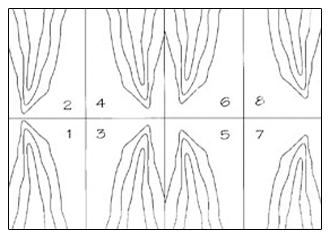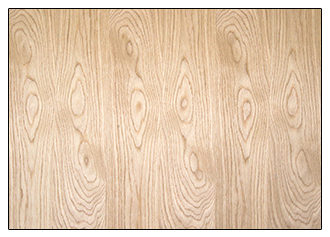

One leaf is spliced end to end with another leaf to create a longer panel or piece of veneer. End matching is often used to extend the apparent length of available veneers for high wall panels and long conference tables. End matching occurs in two types: Architectural end matching, where leaves are individually book (or slip) matched, first end-to-end and then side-to-side, alternating end and side.
This produces the best continuous grain patterns for length as well as width. The second end match is Panel End Match, where leaves are book or slip matched on panel subassemblies, with sequenced sub-assemblies end matched, resulting in some modest cost savings on projects where applicable. For most species, Panel End Match yields pleasing blended appearance and grain continuity.
